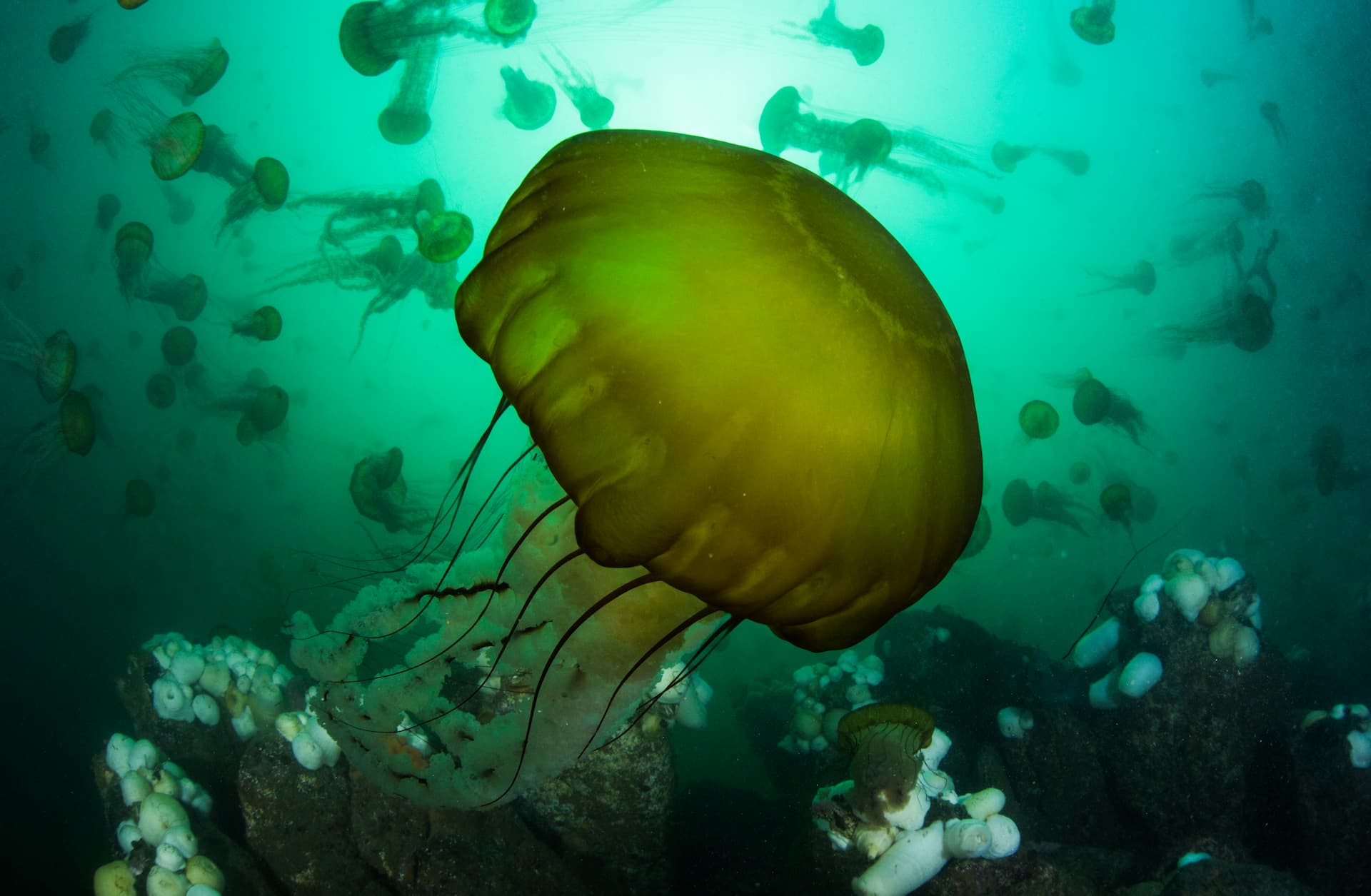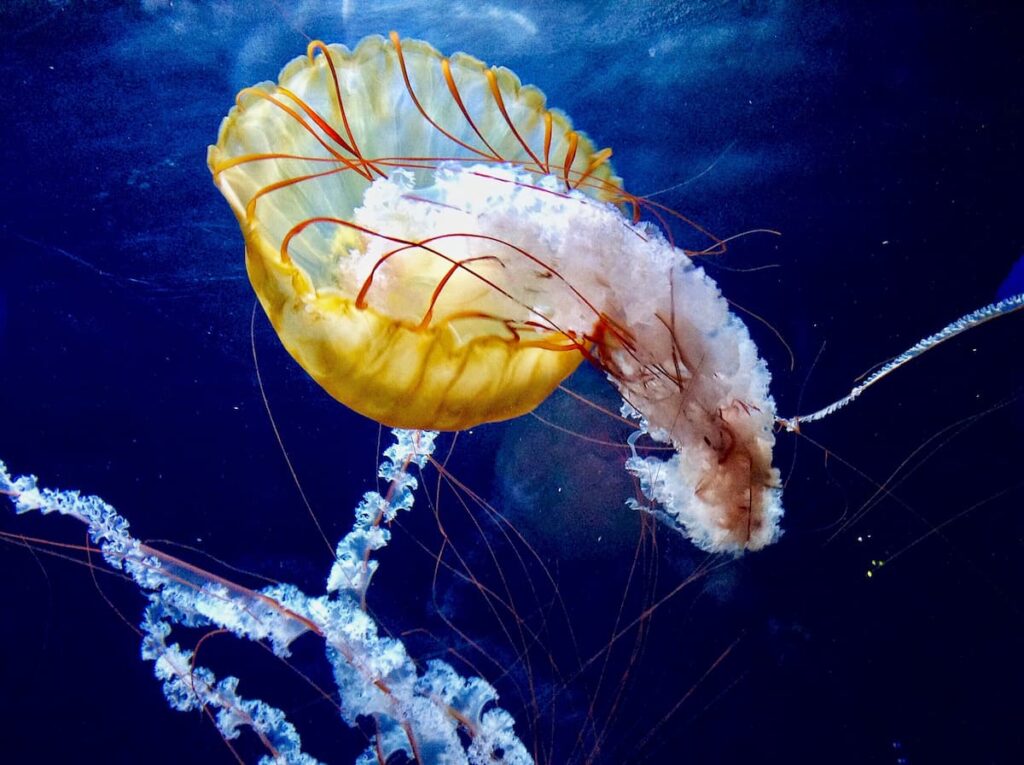Watch Out for Nettles
This jelly has a dangerous secret

Sometimes when you live in a big city like Baltimore, you forget that you are still living in a vibrant ecosystem. One of my favorite things to do with friends is to spot some of the incredible sea creatures that live in our harbor. One of my favorite animal neighbors is the Atlantic bay nettles, which were recently discovered to be a different species of sea nettle that lives in the Chesapeake Bay. You can commonly see these gorgeous jellyfish here in the summer and fall. They have beautiful long tendrils that dance around as they glide in a pulsing motion. But before you get too lured in by this mesmerizing façade, I should warn you: Atlantic bay nettles, and their other sea nettle relatives, can be dangerous.
Hidden in the beautiful frills and ribbons of a sea nettle’s tentacles and arms are stinging cells. For their prey these stings can result in paralysis and death. Once stunned the jellyfish will use its arms to move the unfortunate creature into its mouth for snack time. If you’re not a fish egg, worm or other sea nettle prey, that doesn’t mean you don’t still have to worry about its stings. In humans, a sea nettle sting can leave a rash with a painful and burning sensation.
Get Ocean Updates in Your Inbox
Sign up with your email and never miss an update.
What do you do if you’re one of the unlucky few who gets stung? Start by looking through your kitchen cabinets. Cleaning the sting with a mixture of ocean water and baking soda or meat tenderizer is the most common recommendation for sea nettle stings. If you don’t want to worry about storing these items in your beach bag, its best to check on the local conditions before you jump in. For fellow Chesapeake Bay residents, you can check this NOAA Map to see the probability of encountering our local Atlantic bay nettles at your local beach.
If you do encounter a sea nettle on the beach, remember to look, don’t touch. Jellyfish aren’t great swimmers so they aren’t going to aim for you, but they can’t easily swim out of the way either. The best way to share our water with them is to be aware of your surroundings and give them a wide berth.

There are actually a lot of pros to sharing our waters with sea nettles and other related sea nettles. They provide protection to some of the other animals around them. Pacific sea nettles give young cancer crabs a ride into shore as well as provide a snack as these crabs eat some of the mucus from their arms. When a predator scares a Pacific butterfish, they find safety in a sea nettle’s bell.
For my fellow residents of the Chesapeake Bay, we can thank our Atlantic bay nettles for protecting our oysters. Bay nettles eat comb jellyfish which are key predators for oyster larvae. In return, oyster beds offer a safe home for baby bay nettles to grow. Bay nettles can help our local oyster populations which in turn helps clean the waters in the bay. Oysters are filter feeders and can filter up to 50 gallons of water a day.

In the Pacific, brown sea nettles are the favorite food of the endangered leatherback sea turtle. These turtles journey to the west coast every spring and summer to find the very jellies we humans would prefer to avoid. These sea turtles don’t have to worry about getting stung, however. Their scales and shells protect them on the outside, and papillae, a layer of spines from their throat to their esophagus, protect their insides.
A sea turtle’s love for jellyfish can also be its downfall and is an important reminder of the other dangers of human interaction with our ocean. Floating plastic bags that end up in the ocean can easily be confused for jellyfish and eaten by turtles. Scientists have found plastics in all seven species of sea turtles on the planet. We can play an important role in protecting our beaches, beyond dodging sea nettles, by keeping our ocean free of plastics. Take action now to tackle the plastic pollution crisis.